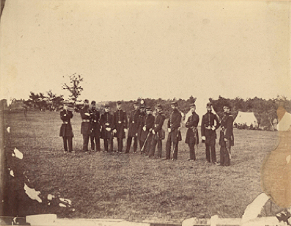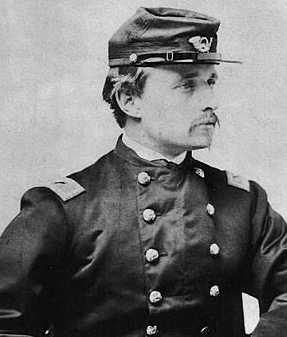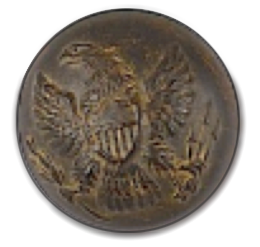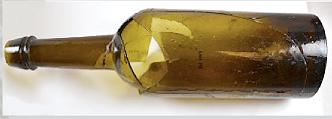I never raised much of a crop upon [Brook Farm]; but in 1861 it bore the greatest crop of any farm in Massachusetts, in courage, devotion, and military renown of the officers and men of that noble regiment.
~ James Freeman Clark, owner of Brook Farm
”The War Begins: Training at Camp Andrew
In 1861, with the onset of the Civil War, James Freeman Clark, owner of the Brook Farm property, recognized the usefulness of his land and offered it to the Grand Army of the Republic for use as a training camp. The Second Massachusetts Regiment of Infantry, the first unit composed entirely of volunteers raised in the state, was sent to train at the newly established Camp Andrew at Brook Farm in May of 1861. The celebrated Major George H. Gordon was chosen to command the battalion.
While the 2nd Regiment only lived and trained at Brook Farm for two months, from May until July, they added significantly to the archaeological record. The almshouse buildings were used as the officer’s quarters and a large hill in the center of the property served as the parade ground and camp. The soldiers were armed according to the standards of the U.S. Army and drilled at the camp often to crowds of spectators.

Courtesy of The Massachusetts Historical Society
Colonel Robert Gould Shaw, later commander of the first all-black regiment, the 54th, in the North East, also trained at Camp Andrew when he was a lieutenant. His parents were abolitionists in West Roxbury. When he was a child, his father often used to bring him to Brook Farm and for a time, he was enrolled in the school.

The artifacts left behind by the regiment are glimpses into life at Camp Andrew. The buttons would have adorned the government issue uniforms that all the soldiers were required to wear. The bullets found are evidence of the training and parading that the troops were required to practice. And finally, the glass liquor bottles represent the leisure time, whether condoned or not, of the men.


